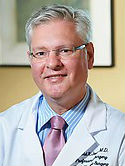| Abstract: |
Background: Chest radiography is routinely performed after endobronchial ultrasound–guided fine needle aspiration (EBUS-FNA) to detect clinically occult pneumothorax. Because the established rate of postprocedure pneumothorax is low, this study sought to determine whether routine chest radiography can be safely eliminated and to ascertain the potential cost reduction with its omission. Methods: Patients who underwent EBUS-FNA between January 1, 2017 and December 31, 2018 at Memorial Sloan Kettering Cancer Center (New York, NY) were retrospectively identified. Patient-related factors were summarized using descriptive statistics. Outcomes were compared using the χ2, Fisher exact, and analysis of variance tests. Univariate regression analysis was used to identify factors predictive of postprocedure pneumothorax. Results: A total of 757 patients were included in the study: 72.4% (548 of 757) underwent routine chest radiography in the postanesthesia care unit. Clinically relevant or radiographically evident pneumothorax developed in 1.5% of patients (11 of 757). Of the patients who underwent chest radiography, 0.5% (3 of 548) required unplanned admission for postprocedure pneumothorax, and 0.2% (1 of 548) required tube thoracostomy. Of the 209 patients who did not undergo chest radiography, none experienced a clinically evident pneumothorax. In total, only 1 patient (0.1%) had symptomatic pneumothorax. The pneumothorax event rate was so low that no association with demographic or clinical factors and no predictive factors could be identified. The number of patients needed to be screened by chest radiography to identify 1 patient requiring deviation from routine management is 183. The potential total cost reduction if routine chest radiography had been eliminated was $33,950. Conclusions: The extremely low rate of postprocedure pneumothorax precluded informative statistical analysis. Routine chest radiography after EBUS-FNA may not be necessary, and its omission may confer a cost savings. © 2021 The Society of Thoracic Surgeons |


















